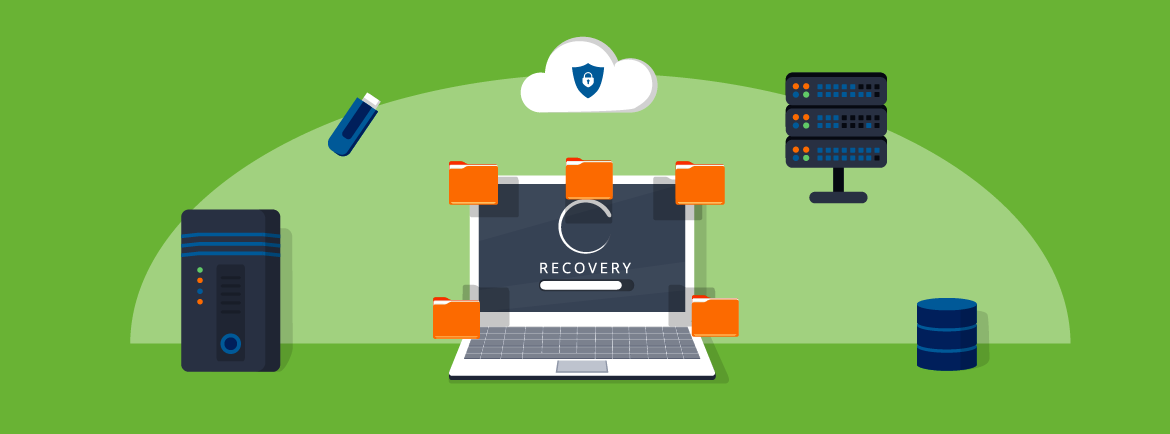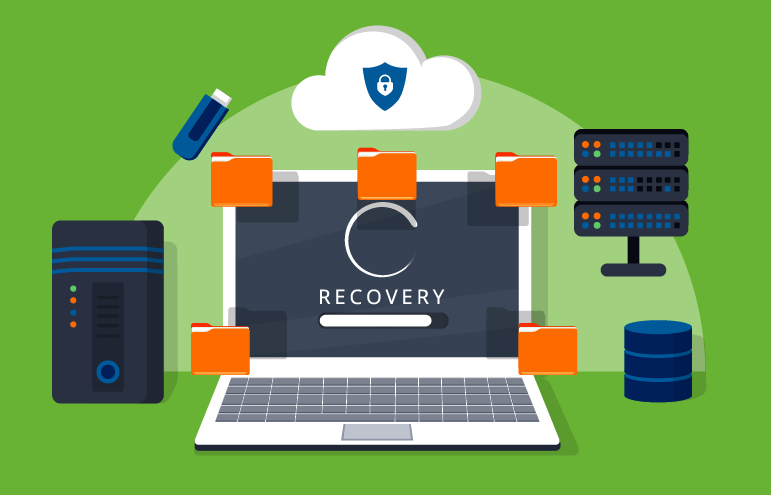Why a Comprehensive Disaster Recovery Service is Critical to Any Financial Institution’s BCM

As part of business continuity management (BCM), banks and credit unions must ensure they can maintain and recover their operations after a catastrophic event happens. Their BCM strategy should outline all the significant actions they intend to take after a natural disaster, technological failure, human error, terrorism, or cyber attack. The goal is to lessen the disaster’s impact on business operations, so the financial institution can continue running with minimal loss and downtime.
Disaster recovery (DR) is essentially the IT part of the business continuity plan. It should address the recovery of data centers, networks, servers, storage, service monitoring, user support, and related software needed to get operations back to normal, based on the Federal Financial Institution Examination Council (FFIEC) IT Handbook’s Business Continuity Management booklet.
The Need for a Comprehensive DR Solution
Financial institutions must have effective DR measures in place to ensure they can deliver the resources their employees need to continue serving customers after a disaster. That’s why having a comprehensive DR service is so critical. The simplest and most cost-effective way to accomplish this is with a cloud-based solution.
With DR in the Cloud, institutions are always prepared to respond to natural and man-made disasters as well as infrastructure and technology failures. The Cloud allows institutions to access their data—no matter what kind of disaster strikes. This could be crucial if a severe storm does damage to an entire city and multiple locations of a community financial institution. The institution would not be able to handle DR on-site, making the Cloud the most viable option. The March 25th outbreak of tornados in central Alabama is a good example of the potential need for cloud DR. The tornadoes tore into hundreds of miles of Alabama forest and neighborhoods, causing significant damage, according to the National Weather Service.
The Cloud provides major benefits in any DR situation, including ease, expediency, and efficiency. If institutions have been doing ongoing backups, they can leverage the Cloud to initiate DR right away. The process is quick; recovery can take minutes instead of hours or days as it did for older DR solutions. However, it’s important to set up DR processes so that they are not subject to issues that can impact the institution’s main system. Take, for instance, the rapidly increasing problem of ransomware. It’s important to have cloud DR services structured so that the DR backups cannot also be infected with the same ransomware.
Essential Aspects of a DR Service
Another essential element for a cloud DR service is testing. The test results should be documented and available for Management and the Board of Directors to scrutinize. This can help institutions ensure their expectations are being met by the DR service. Institutions that are not using a comprehensive DR service are more likely to delay the testing and validation steps that are critical to business continuity planning (BCP). It’s basic human nature: IT admins tend to prioritize addressing urgent day-to-day issues over doing routine testing.
So, either testing doesn’t get done regularly or it doesn’t happen at all. A third-party DR service with a team of experts available can make sure testing gets done at the proper time. Another important issue for institutions is having IT staff available with the appropriate knowledge when a disaster strikes. With an external service provider, someone with the right expertise will always be there to execute the disaster recovery. So, the success of the institution’s DR plan will not depend on the availability of just a few employees.
A comprehensive cloud DR service offers substantial redundancy, reliability, uptime, speed, and value. It can give financial institutions the best bang for their buck. Not using cloud DR can be cost-prohibitive for many institutions, considering the hardware and software requirements, maintenance, ongoing testing, and documentation required. Ultimately, a cloud DR solution from an external service provider can give institutions the comfort of knowing their DR plan is being adequately tested and will work during a real disaster.

